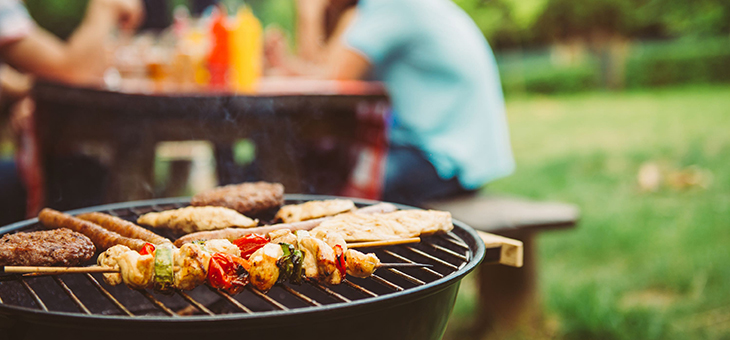We’re coming into barbecue season, when budding chefs – often in novelty aprons, tongs at the ready – fire up the barbie to cook everything from basic sausages, ribs and chicken drumsticks to more adventurous griddled veg, goat kebabs and lobster burgers.
Yet, a few decades ago, it took an age to light the barbecue. You’d be covered in soot from the charcoal, bellows at the ready, and all you would have at the end was inedible blackened sausages and scorched burgers.
Like the food, barbecues have changed over the years – from the early kettle models, to the brick-built DIY projects of the ’70s, to the stainless-steel altars to gastronomy they have become today.
Barbecue history
Despite looking fairly similar, the barbecue as we know it has gone on quite a journey. From barbecue pits post World War II, to the kettle barbecue, which fed us in the ’60s and ’70s, through to the ’80s, which saw the rise of the larger outdoor cooking units we see today.
What has changed dramatically is the choice available, whether that be charcoal, gas or electric barbecues or briquettes, fire starters and smoking wood.
1950s
After his attempts at cooking on a brick fireplace barbecue resulted in the food going up in flames because he couldn’t control the fire, George Stephen, a welder from Chicago, decided to take action.
He was working at Weber Brothers Metal Works where they made buoys for the Chicago harbour system. Half spheres of steel would be welded together to make a buoy and Stephen took one of the half spheres, put legs on it, punched holes in the bottom to get air moving through and put a lid on top. That was how the first kettle barbecue evolved in 1952.
He was looking for a grill that would allow him to create great-tasting food for his family.
By adding a lid and vents he discovered he could control air flow, maintaining a constant cooking temperature for outstanding results.
This concept of lid-on cooking revolutionised charcoal barbecuing, and holds true today with all Weber grills, banishing the notion that barbecue food is burnt on the outside and raw in the middle.
1960s
The kettle barbecue remained the same essentially, although it was embellished with different colours, handles and frames to persuade the public that cooking al fresco was the way to go.
Meanwhile, the Arkansas Louisiana Gas Company redesigned a charcoal grill to run on bottled propane in an effort to get customers to buy more natural gas. It was more expensive, but new customers found it easier to use.
1970s and `80s
As DIY stores came into their own, brick-built barbecues became the griddles of choice in the `70s. You could make them to measure, as long as the griddle would fit across, and they would last for years. The only disadvantage was they weren’t portable.
While purists continued to use charcoal to cook their food, gas barbecues were ‘exploding’ on to the market and, slowly but surely, rectangular replaced round and lava rocks were inserted into gas grills – but the rocks were porous, absorbing fat and would eventually flare up.
In the mid-80s Weber introduce ‘Flavorizer’ bars into its new Genesis gas barbecue – angled pieces of metal above the burners. The juices and fats dripping on to these bars vaporised, creating a smoky barbecue flavour, and with the lid down the smokiness was infused into the food.
And now
Things have come full circle with open-air dining, as barbecues merge with outdoor heaters to become one.
On point are firepits, huge authentic Indian fire bowls made from recycled steel with accompanying barbecue racks, and snazzy outdoor heaters that double up as a barbecue but funnel the smoke out so you don’t end up smelling like a bonfire. All come at a price.
The technological advances have also been immense, enabling chefs to cook everything from a full English breakfast, to a roast chicken, with thermometers which allow you to monitor the progress of your food from an app.
But for some, the kettle barbecue will forever remain a favourite.
What barbecue do you use? Do you prefer built-in or portable? Would you ever advance from a barbecue to a fire pit or authentic pizza oven in your garden?
– With PA
If you enjoy our content, don’t keep it to yourself. Share our free eNews with your friends and encourage them to sign up.
Related articles:
https://www.yourlifechoices.com.au/food-recipes/recipes/barbecued-sticky-spare-ribs
https://www.yourlifechoices.com.au/lifestyle/leisure/quiz-barbecue-personality
https://www.yourlifechoices.com.au/food-recipes/food/how-to-host-the-best-barbecue

